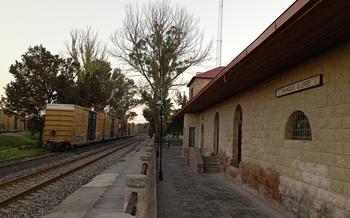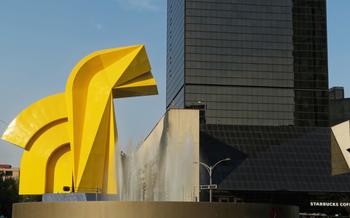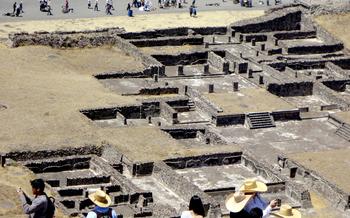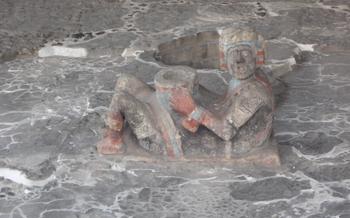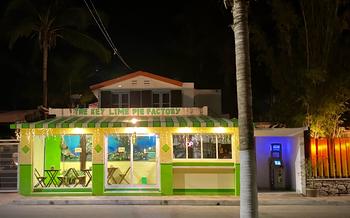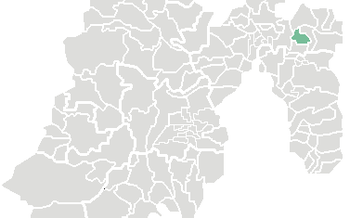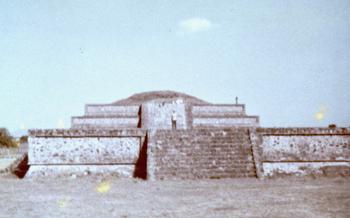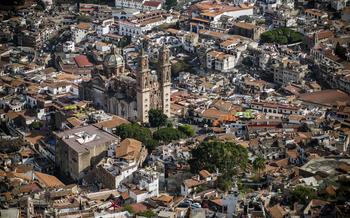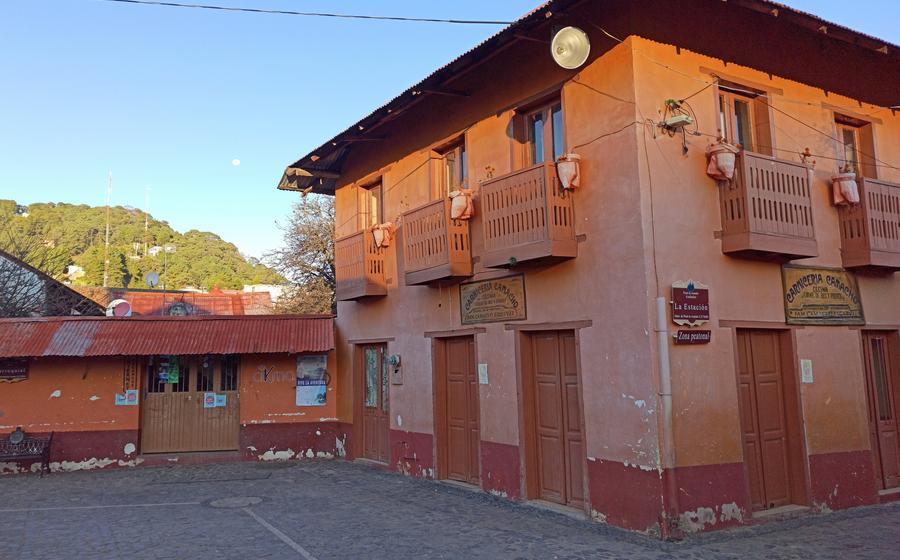
Museum of Mathematics
- Historical Background
- Location and Accessibility:
- Exhibitions and Displays
- Museum Activities and Programs
- Famous Mathematical Exhibits
- Educational Resources
- Museum Architecture and Design
- Temporary Exhibitions
- Community Engagement
- Research and Collaboration
- Accessibility for All
- Cultural Significance
- Sustainability and Environmental Awareness
- Visitor Tips and Recommendations
- Insider Tip: Unraveling the Enigmatic Enigma Machine
Historical Background
Mathematics has a rich and storied history in Mexico, dating back to pre-Columbian civilizations. The ancient Mayans, Aztecs, and Zapotecs developed sophisticated mathematical systems that were used for everything from astronomy to architecture. In the colonial era, mathematics was introduced to Mexico by Spanish missionaries and scholars. Queretaro, a city in central Mexico, played a significant role in the development of mathematical thought during this period. The city was home to several prominent mathematicians, including José Antonio de Alzate y Ramírez, who founded the first mathematics academy in the Americas in 179The Museum of Mathematics was established in Queretaro in 1999 to honor this rich mathematical heritage and to promote mathematical education and appreciation. The museum features a variety of interactive exhibits and displays that make mathematics accessible and enjoyable for visitors of all ages.
Location and Accessibility:
The Museum of Mathematics is strategically situated in the heart of Queretaro's historic center, making it easily accessible for visitors. Situated on Calle Pasteur Norte 47, just a short walk from the iconic Plaza de Armas, the museum is nestled amidst colonial-era buildings and vibrant plazas. Reaching the museum is a breeze, with various transportation options available. Public buses and taxis frequently ply the area, dropping visitors off just a few steps from the entrance. For those arriving by car, the museum offers ample parking facilities nearby. Furthermore, the museum is wheelchair accessible, ensuring that visitors with disabilities can comfortably explore its exhibits and participate in its programs.
Exhibitions and Displays
The Museum of Mathematics in Queretaro boasts a diverse range of permanent and temporary exhibitions that cater to visitors of all ages and interests. Permanent exhibits include the "Mathematics of Everyday Life," where visitors can explore the practical applications of mathematics in various fields such as architecture, engineering, and finance. The "Mathematical Illusions" exhibit showcases mind-bending optical illusions and paradoxes that challenge our perception of reality. Interactive displays and hands-on activities are a hallmark of the museum, allowing visitors to engage with mathematical concepts in a fun and interactive way. From solving mathematical puzzles to experimenting with geometric shapes, there's something for everyone to enjoy and learn from.
The educational value of the exhibits lies in their ability to make complex mathematical concepts accessible and enjoyable. Through interactive experiences, visitors gain a deeper understanding of abstract mathematical principles and develop an appreciation for the beauty and elegance of mathematics. The museum strives to dispel the notion that mathematics is dry and intimidating, instead presenting it as a dynamic and engaging subject that is relevant to our everyday lives.
Museum Activities and Programs
Beyond its captivating exhibitions, the Museum of Mathematics offers a diverse range of engaging activities and programs to cater to visitors of all ages and interests. Special events, workshops, and educational programs are regularly organized to provide a dynamic and interactive learning experience.
For those seeking a deeper dive into the world of mathematics, the museum hosts workshops and seminars led by renowned mathematicians and educators. These sessions offer participants the opportunity to explore specific mathematical topics in greater depth, engage in hands-on activities, and interact with experts in the field.
The museum also organizes regular competitions and challenges to foster a spirit of friendly competition among math enthusiasts. These challenges range from problem-solving contests to mathematical puzzles, encouraging participants to showcase their skills and knowledge while having fun.
Guided tours are available for visitors who prefer a more structured experience. Led by knowledgeable museum guides, these tours provide an in-depth exploration of the exhibits, allowing visitors to gain a deeper understanding of the mathematical concepts and principles behind them. Multilingual guides are available to accommodate visitors from different language backgrounds.
Famous Mathematical Exhibits
Among the many fascinating exhibits at the Museum of Mathematics, a few stand out for their iconic status and mathematical significance. One such exhibit is the Mobius strip, a one-sided surface with only one edge. Visitors can create their own Mobius strips using paper and scissors, demonstrating the curious properties of this topological object.
Another highlight is the Klein bottle, a surface that is both inside and outside itself. While it is impossible to create a true Klein bottle in three-dimensional space, the museum's exhibit uses a clever trick to create a physical representation that helps visitors visualize this mind-bending concept.
The Penrose staircase, an optical illusion that appears to be a staircase that loops back on itself, is another popular exhibit. Visitors can engage with this exhibit by walking up and down the stairs, experiencing the disorienting effect of this impossible staircase firsthand.
These exhibits are not just visually stunning; they also serve as powerful tools for understanding complex mathematical concepts. Through interactive displays and hands-on activities, the Museum of Mathematics makes these abstract ideas accessible and enjoyable for visitors of all ages.
Educational Resources
The Museum of Mathematics is not just a place to learn about mathematical concepts but also a hub for educational resources that cater to visitors of all ages and backgrounds. The museum houses a well-stocked library filled with books, journals, and magazines covering a wide range of mathematical topics, from basic arithmetic to advanced calculus and beyond.
In addition to the library, the museum offers a variety of educational programs and initiatives designed to make mathematics accessible and engaging for everyone. These programs include workshops for students and teachers, math clubs for children and adults, and outreach programs that bring mathematical activities to schools and community centers.
One of the most successful educational initiatives of the museum is its "Math in the City" program, which brings interactive math exhibits and activities to public spaces throughout Queretaro. This program has been particularly effective in reaching underserved communities and inspiring young people to pursue careers in mathematics or math-related fields.
The museum's educational resources have had a profound impact on the local community. Many students who have participated in the museum's programs have gone on to excel in mathematics and pursue higher education in STEM fields. The museum has also played a key role in meningkatkan mathematical literacy among the general public, helping to create a more informed and scientifically literate society.
Museum Architecture and Design
The Museum of Mathematics in Queretaro is housed in a striking contemporary building designed to reflect the museum's mission and exhibits. The building's sleek lines and geometric forms create a visually appealing space that complements the mathematical concepts explored within.
The use of natural light and interactive elements throughout the museum enhances the visitor experience. Large windows allow ample sunlight to flood the galleries, creating a bright and inviting atmosphere. Interactive displays and hands-on activities are strategically placed throughout the museum, encouraging visitors to engage with the exhibits and learn through play.
One of the most unique features of the museum's design is the central atrium, which serves as a gathering space for visitors and hosts special events and workshops. The atrium is adorned with a stunning mathematical sculpture that captivates the eye and invites visitors to explore the wonders of mathematics.
The Museum of Mathematics in Queretaro is not just a place to learn about mathematics; it is also a work of art in its own right. The building's architecture and design seamlessly blend with the exhibits, creating an immersive and engaging experience for visitors of all ages.
Temporary Exhibitions
Temporary exhibitions at the Museum of Mathematics play a crucial role in keeping the museum's content fresh, engaging, and relevant to contemporary mathematical developments. These exhibitions often explore cutting-edge research, emerging trends, or specific mathematical themes that may not be covered in the permanent exhibits.
Past temporary exhibitions have showcased topics such as the mathematics of knots, the geometry of origami, and the applications of mathematics in artificial intelligence. These exhibitions have been particularly popular among visitors for their innovative displays, interactive activities, and thought-provoking content.
The selection of temporary exhibitions is a collaborative process involving museum curators, mathematicians, and educators. The museum strives to present exhibitions that align with its overall mission of promoting mathematical literacy, fostering a love of mathematics, and encouraging mathematical exploration and discovery.
Temporary exhibitions at the Museum of Mathematics offer visitors a unique opportunity to engage with the latest mathematical ideas and developments, learn about new applications of mathematics in various fields, and appreciate the beauty and elegance of mathematics beyond the traditional classroom setting.
Community Engagement
The Museum of Mathematics is committed to fostering a thriving mathematical community in Queretaro and beyond. Through various outreach programs, partnerships, and collaborations, the museum strives to engage with people of all ages and backgrounds, promoting mathematical literacy and appreciation.
One of the museum's key initiatives is its collaboration with local schools. The museum offers guided tours, workshops, and educational programs tailored to different grade levels, inspiring young minds to explore the world of mathematics. These programs aim to make mathematics fun and accessible, showing students how math is relevant to their everyday lives.
The museum also collaborates with universities and research institutions, providing a platform for mathematicians and educators to share their knowledge and expertise with the public. Joint seminars, workshops, and conferences foster a vibrant exchange of ideas, contributing to the advancement of mathematical research and education.
Furthermore, the museum actively participates in community events, festivals, and competitions. These events provide an opportunity for the museum to showcase its exhibits and activities to a wider audience, while also engaging the community in fun and interactive mathematical challenges.
The museum's community outreach efforts have had a significant impact on Queretaro. By promoting mathematical literacy and creating a welcoming and inclusive environment for learning, the museum has inspired many individuals to pursue careers in mathematics and math-related fields. The museum's commitment to community engagement has helped to create a vibrant and thriving mathematical culture in the city.
Research and Collaboration
The Museum of Mathematics is not just a place for learning and entertainment; it also serves as a hub for mathematical research and collaboration. The museum has partnered with universities, research institutions, and individual mathematicians to support ongoing research projects and foster a vibrant mathematical community.
-
Collaborative Research: The museum provides a platform for mathematicians to work together on various research projects. These collaborations often lead to groundbreaking discoveries and advancements in the field of mathematics.
-
Educational Partnerships: The museum collaborates with educational institutions to develop innovative educational programs and materials. These partnerships aim to bring mathematical concepts to life and inspire young minds to pursue careers in mathematics.
-
Notable Achievements: Through its research and collaboration initiatives, the Museum of Mathematics has contributed to several notable achievements. For example, the museum's collaboration with a local university led to the development of a new mathematical model that has potential applications in artificial intelligence and machine learning.
Accessibility for All
The Museum of Mathematics is committed to making mathematical learning accessible to everyone, regardless of age, background, or ability. To ensure an inclusive and welcoming environment, the museum offers a range of special programs, resources, and facilities designed to accommodate visitors with disabilities or learning differences.
For visitors with mobility impairments, the museum provides wheelchair accessibility throughout its premises, including ramps, elevators, and accessible restrooms. Additionally, visitors can borrow wheelchairs or mobility scooters on a first-come, first-served basis.
For visitors with visual impairments, the museum offers audio guides with detailed descriptions of the exhibits. Touch-based exhibits and tactile models allow visitors to explore mathematical concepts through their sense of touch.
For visitors with hearing impairments, the museum provides closed captioning and sign language interpretation upon request. Assistive listening devices are also available to enhance the audio experience during guided tours or presentations.
The museum staff is trained to assist visitors with disabilities and to ensure that everyone has a positive and enriching experience. Visitors are encouraged to contact the museum in advance to discuss any specific needs or accommodations required.
One inspiring story that exemplifies the museum's commitment to accessibility is that of a young girl named Sarah. Sarah was born with cerebral palsy and has limited mobility. When she visited the Museum of Mathematics with her family, she was initially hesitant to participate in the activities. However, with the help of the museum's friendly and supportive staff, Sarah was able to explore the exhibits using adaptive technology and discovered a newfound love for mathematics. Sarah's experience at the Museum of Mathematics inspired her to pursue a career in mathematics education, and she is now a passionate advocate for making mathematics accessible to everyone.
Cultural Significance
The Museum of Mathematics in Queretaro serves as a vibrant hub for promoting mathematical culture and appreciation, not just within the city but also in the broader region. The museum organizes a variety of cultural events, festivals, and competitions to engage the public with mathematics in a fun and interactive way. These events often feature renowned mathematicians, math enthusiasts, and educators who share their knowledge, insights, and passion for the subject.
The museum's cultural initiatives extend beyond its walls, as it collaborates with schools, universities, and community organizations to host outreach programs and workshops. These programs aim to spark an interest in mathematics among young people, particularly those who may not have had positive experiences with the subject in traditional educational settings. By showcasing the beauty, creativity, and applicability of mathematics, the museum inspires a new generation of math enthusiasts and encourages them to pursue careers in STEM fields.
The Museum of Mathematics has become a cultural landmark in Queretaro, attracting visitors from all walks of life who are eager to explore the fascinating world of mathematics. It is a place where people of all ages can come together to learn, discover, and be amazed by the power and beauty of numbers.
Sustainability and Environmental Awareness
The Museum of Mathematics in Queretaro is committed to operating in a sustainable and environmentally friendly manner. The museum has implemented various initiatives to reduce its ecological footprint, including energy-efficient lighting and climate control systems, water conservation measures, and a comprehensive recycling program. The museum also promotes sustainability through its exhibits and educational programs, inspiring visitors to adopt more sustainable practices in their own lives.
One of the museum's most notable sustainability initiatives is its rooftop garden. The garden features a variety of native plants and herbs, which are used in the museum's café and educational programs. The garden also serves as a habitat for local wildlife and helps to reduce the museum's carbon footprint by absorbing carbon dioxide and producing oxygen.
The Museum of Mathematics is a leader in sustainability among museums in Mexico. Its commitment to environmental responsibility demonstrates the museum's dedication to creating a positive impact on the community and the planet.
Visitor Tips and Recommendations
To make the most of your visit to the Museum of Mathematics, plan your trip during the weekdays to avoid the weekend crowds. Arrive early to have ample time to explore the exhibits at your own pace. Start your journey with the permanent exhibitions to grasp the foundational concepts of mathematics. Don't miss the interactive displays and hands-on activities; they are designed to engage visitors of all ages and make learning mathematics enjoyable.
Take advantage of the special events, workshops, and educational programs offered by the museum. These events provide a unique opportunity to interact with experts, participate in hands-on activities, and delve deeper into specific mathematical topics. Don't forget to check the museum's website or social media pages for upcoming events and programs.
If you're traveling with children, the museum offers a range of activities designed to spark their curiosity and nurture their love for mathematics. Look out for the "Mathematics Playground" and the "Math Adventure Zone," where kids can play games, solve puzzles, and engage in interactive learning experiences.
For a truly immersive experience, consider booking a guided tour. Knowledgeable guides will take you on a journey through the museum's exhibits, explaining the mathematical concepts in a clear and engaging manner. Multilingual guides are available for visitors who prefer tours in languages other than Spanish.
Whether you're a seasoned mathematician or a curious explorer, the Museum of Mathematics in Queretaro promises an enriching and enjoyable experience. Embrace the opportunity to discover the beauty and wonder of mathematics and leave the museum with a newfound appreciation for this fascinating field.
Insider Tip: Unraveling the Enigmatic Enigma Machine
Venture beyond the main exhibits to uncover a hidden gem in the Museum of Mathematics—a replica of the legendary Enigma machine, a complex cipher device used during World War II. Immerse yourself in the fascinating history of cryptography as you explore the intricate mechanisms of this iconic machine. Try your hand at deciphering coded messages, just like the codebreakers of the past. This interactive exhibit offers a unique opportunity to unravel the secrets of encryption and experience the thrill of solving a cryptic puzzle. It's a must-see for anyone interested in the intersection of mathematics, history, and espionage.
